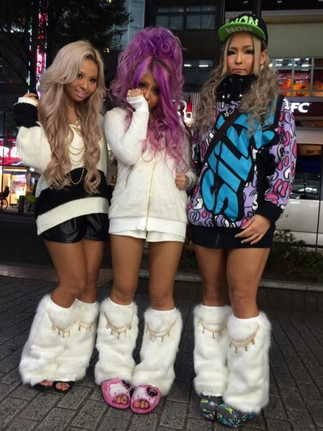Harajuku: Street Fashion as an Act of Social Resistance
- Gia Davis
- Nov 18, 2023
- 2 min read
The district of Harajuku in Tokyo, Japan, is internationally known as a hub for Japanese youth culture and fashion. In the 1970s, a wave of fashion-obsessed culture made its way to the streets of Harajuku as the popularity of shopping malls began to grow. This led to a rise in consumerism as well as an adoption of western fashion and ideals.
As a result, an underground fashion scene began to thrive in the streets of Harajuku, centered around fashion that represented rebellion against traditional values in Japan. In the 1990s and 2000s, this grew even more with an increase in independent niche fashion trend boutiques in Harajuku, each catering to different categories of underground Harajuku subcultures.
Underground music scenes also became popular, one being Japanese hip-hop, causing an influence on Japanese youth with them moving more towards baggier clothing and even more tanned skin, away from the Japanese beauty ideal of pale skin. This underground hip-hop influence on Harajuku led to the subculture of gyaru, which is heavily inspired by western fashion.
Gyaru fashion consists of overall excess, usually paired with tanned skin and extreme makeup and hair. Japanese youth who dress in gyaru styles are usually marginalized and outcast by Japanese society, even from other Japanese youth, with gyaru style carrying a stereotype of delinquency.
Another popular fashion style and subculture in Harajuku is the Lolita aesthetic. This style is heavily influenced by 1800s European fashion, consisting of very pale skin, lots of ruffles and petticoats and religious iconography in jewelry and clothing. This subculture is also known for going against cultural norms and traditions, taking inspiration from early European clothing.
Both gyaru and Lolita subcultures are marginalized in modern Japanese society, and because of this, tight-knit social spheres based on group connections have started to emerge. Gyaru and Lolita are prime examples of subcultures that are fighting against cultural norms and showing how fashion can be a form of social resistance, especially in underground youth culture.















Comments